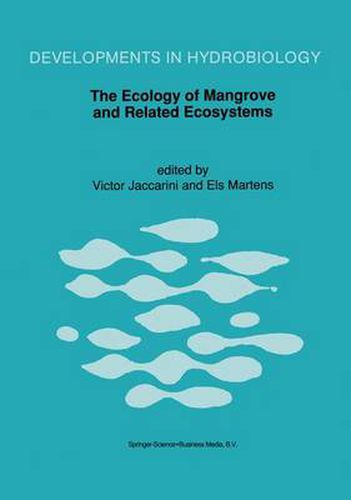Readings Newsletter
Become a Readings Member to make your shopping experience even easier.
Sign in or sign up for free!
You’re not far away from qualifying for FREE standard shipping within Australia
You’ve qualified for FREE standard shipping within Australia
The cart is loading…






This title is printed to order. This book may have been self-published. If so, we cannot guarantee the quality of the content. In the main most books will have gone through the editing process however some may not. We therefore suggest that you be aware of this before ordering this book. If in doubt check either the author or publisher’s details as we are unable to accept any returns unless they are faulty. Please contact us if you have any questions.
The mangrove, seagrass and coral reef ecosystems are of paramount ecological importance but have already undergone great degradation, which is advancing at an alarming rate. If present trends continue, the natural resource basis of the economy and ecology of tropical coastal regions will soon be ruined. This was the unanimous conclusion of the 110 scientists from 23 countries who gathered in Mombasa, Kenya, for a Symposium on the ecology of these ecosystems.
Mangrove forest systems yield large amounts of fish, crabs, prawns and oysters. They are also valuable sources of fuelwood, timber, tannin and other natural products. Their non-marketable value is of equal importance: stabilization of the coastline, an indispensable nursery ground for numerous marine species with commercial value, a natural filter maintaining the clarity of nearshore water, a home for resident and migratory birds and other wildlife. Many of the true mangrove flora and fauna are now endangered by the clearing of the mangroves. It has been shown that in many countries between 25 and 100% of the mangrove forest has been destroyed alraedy in the last twenty years.
The international scientific assembly concluded that much can be done to stop the degradation of these damaged ecosystems and to rehabilitate them. But new techniques must be found to use them on a sustainable basis for long-term economic return and for the well-being of coastal human settlements and a healthy environment.
$9.00 standard shipping within Australia
FREE standard shipping within Australia for orders over $100.00
Express & International shipping calculated at checkout
This title is printed to order. This book may have been self-published. If so, we cannot guarantee the quality of the content. In the main most books will have gone through the editing process however some may not. We therefore suggest that you be aware of this before ordering this book. If in doubt check either the author or publisher’s details as we are unable to accept any returns unless they are faulty. Please contact us if you have any questions.
The mangrove, seagrass and coral reef ecosystems are of paramount ecological importance but have already undergone great degradation, which is advancing at an alarming rate. If present trends continue, the natural resource basis of the economy and ecology of tropical coastal regions will soon be ruined. This was the unanimous conclusion of the 110 scientists from 23 countries who gathered in Mombasa, Kenya, for a Symposium on the ecology of these ecosystems.
Mangrove forest systems yield large amounts of fish, crabs, prawns and oysters. They are also valuable sources of fuelwood, timber, tannin and other natural products. Their non-marketable value is of equal importance: stabilization of the coastline, an indispensable nursery ground for numerous marine species with commercial value, a natural filter maintaining the clarity of nearshore water, a home for resident and migratory birds and other wildlife. Many of the true mangrove flora and fauna are now endangered by the clearing of the mangroves. It has been shown that in many countries between 25 and 100% of the mangrove forest has been destroyed alraedy in the last twenty years.
The international scientific assembly concluded that much can be done to stop the degradation of these damaged ecosystems and to rehabilitate them. But new techniques must be found to use them on a sustainable basis for long-term economic return and for the well-being of coastal human settlements and a healthy environment.